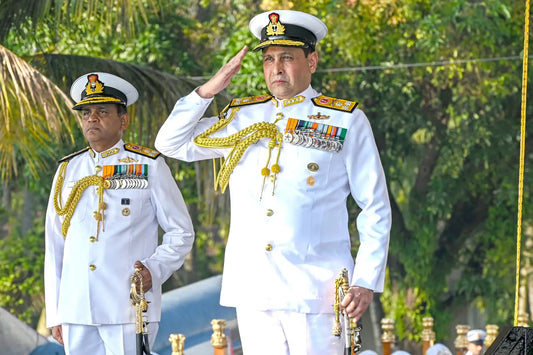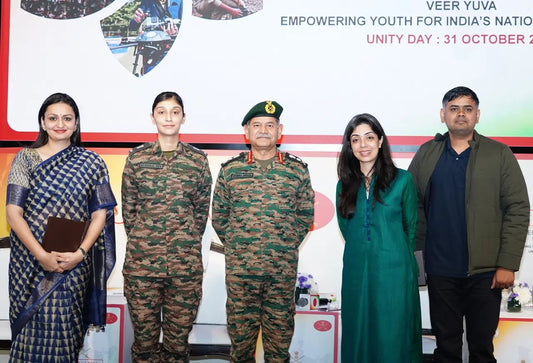Understanding the Significance of Badges Earned by India's Elite Para Commandos

India's Para Commandos, a distinguished unit within the Indian Army's Special Forces, are celebrated for their intense training, exceptional capabilities, and ability to operate in the most demanding environments. They excel in high-risk missions such as counter-terrorism, direct action, and hostage rescue. Their achievements are symbolized by a collection of specialized badges, which are not merely decorative but carry profound meaning, reflecting individual dedication and unit pride.
The origins of the Para Commandos can be traced back to 1945 with the creation of the Indian Army Parachute Regiment. This unit marked a pivotal shift in India's defense strategy, introducing specialized airborne operations during World War II. As military strategies worldwide evolved, so did the need for agile and specialized forces, leading to the formal establishment of the Para Commandos in 1966, focusing on counter-insurgency and special operations. Their operational success in various conflicts, such as the Kargil War, has cemented their status as one of the most elite forces globally.
The badges earned by Para Commandos are a testament to both individual skill and the collective ethos of the unit. Each badge signifies a specific set of skills or achievements obtained through rigorous training or in combat, differentiating them from conventional troops and instilling a sense of pride and motivation. The pursuit of these badges exemplifies their strenuous training and the high standards upheld within the Para Commandos.
The Balidaan Badge is a symbol of bravery and sacrifice, awarded to those demonstrating extraordinary commitment. It represents a soldier's readiness to sacrifice for the nation and is rare, with only 4-5 out of every 100 volunteers earning it. This badge is also awarded posthumously for the first confirmed kill, featuring a commando dagger with wings and the word "Balidaan" in Devanagari script.
The ATGM Badge denotes proficiency in handling advanced weaponry, awarded upon completion of the Anti-Tank Guided Missile course. It signifies skills in defeating armored threats and is worn above the name tag, emphasizing the diverse operational capabilities of the Para Commandos in ground combat.
The Special Forces Badge is a mark of successful probation in the Para SF, worn on the upper sleeves to distinguish members from other military units. It features a maroon background with "SPECIAL FORCES" in light blue, replacing the previous "COMMANDO" tab since 2006.
The Combat Free-Fall Badge is awarded after completing a challenging course involving a minimum of 50 jumps from high altitudes. It includes both HALO and HAHO jumps, showcasing advanced airborne techniques, and is worn above medals and ribbons.
The Para Wings signify basic parachute qualification, earned after completing the Parachute Basic Course. It features a white parachute with light blue wings, symbolizing readiness for rapid deployment.
The Regimental Badge holds a prestigious place in the Parachute Regiment, featuring an open parachute partially enclosed in a circle with wings and a dagger, representing both regimental affiliation and historical significance.
The Jump Indicator Badge quantifies parachuting experience, with additional symbols denoting advanced proficiency. It is a brass emblem indicating the number of successful jumps.
The Diving Badge signifies underwater operational skills, awarded to those who qualify in combat diving, essential for missions involving sea-based infiltrations.
The Commendation Badge is for extraordinary acts beyond regular duties, awarded for bravery, exceptional service, or outstanding achievements.
The Tiger Hill Badge commemorates significant achievements during the Kargil War in 1999, awarded to those who played key roles in capturing Tiger Hill.
The Chakrata Badge signifies service with the Special Frontier Force, featuring a winged square with a dagger and lightning, representing operations conducted with this unit after the 1962 Sino-Indian War.
Para Commandos may also earn foreign badges indicative of international training, such as the US Army Parachutist Badge and the Pathfinder Badge, reflecting global military standards.
The Para Commandos' achievements have been showcased in notable operations, such as their role in the Kargil War. Their capture of Tiger Hill showcased their niche capabilities in high-altitude warfare, aligning with the skills represented by their badges. Another example was the 2016 Uri attack response, where they executed surgical strikes across the Line of Control, underscoring their tactical prowess.
Regarded as one of the most elite forces, only 1% of recruits serve in these specialized roles, with rigorous training ensuring only the most dedicated personnel earn badges like the Balidaan Badge. Their readiness significantly contributes to the success of counter-terrorism operations.
The training regimen for Para Commandos is demanding, with high attrition rates and psychological stress being significant challenges. Enhanced psychological preparation and support systems are proposed solutions to ensure candidates persevere through the tough training phases.
As warfare evolves, the role of elite forces like the Para Commandos is expected to expand. Training paradigms may incorporate new technologies, and international collaborations could enhance operational capabilities, reflecting in badge qualifications.
The badges earned by Para Commandos are not just symbols but emblems of bravery, sacrifice, and exceptional skill. They remain vital identifiers of the dedication and discipline inherent in the Para Special Forces, promoting a culture of excellence. As they continue to protect and serve their nation, these badges will forever symbolize their unwavering commitment and valor.



















